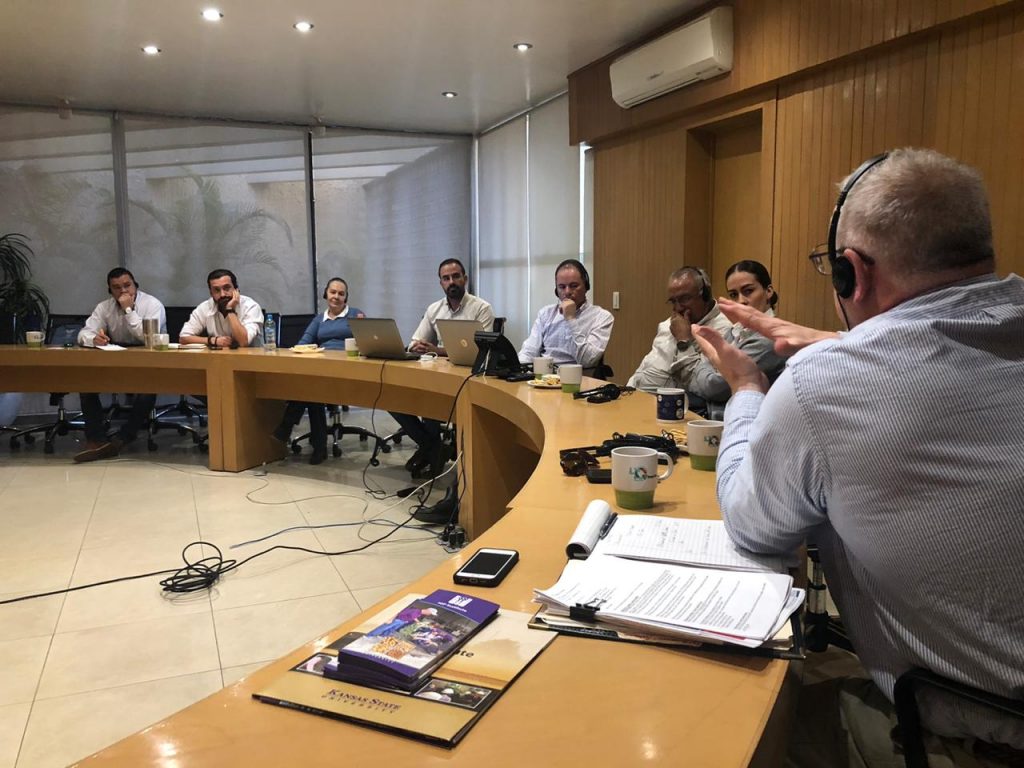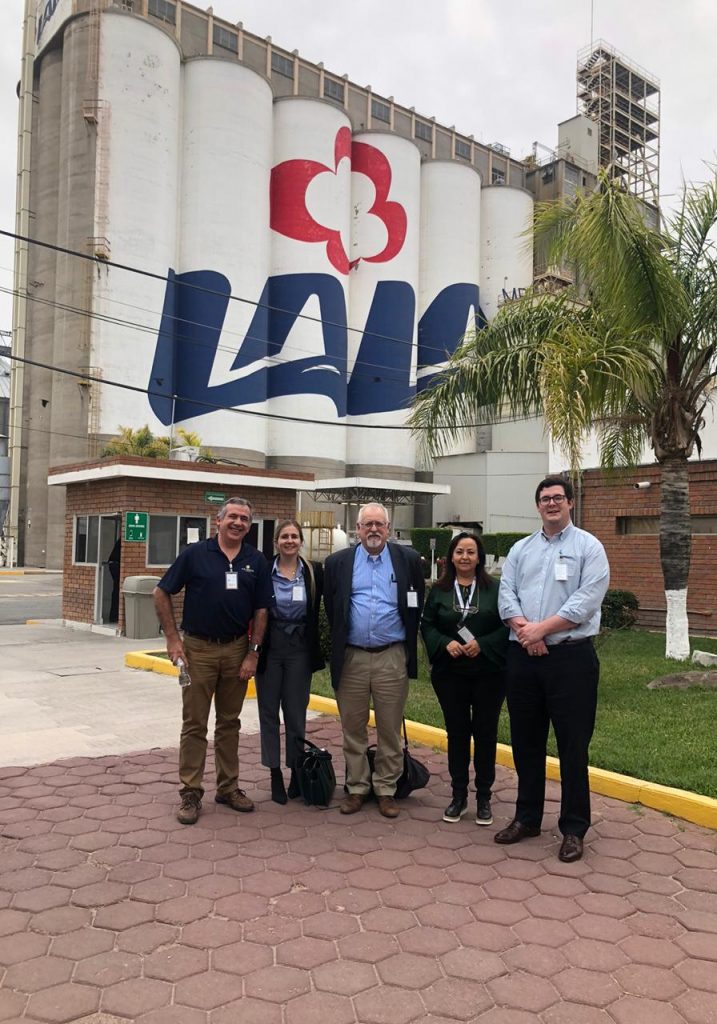Buying and selling grain between the United States and Mexico could be as easy as moving grain between two U.S. states – given the right conditions and risk management tools. That was the message of a series of risk management seminars conducted by the U.S. Grains Council (USGC) in six Mexican cities in five days.
Joined by Guy Allen, senior agricultural economist with the IGP Institute, USGC staff met with a total of 11 different Mexican companies – including producers of eggs, pork, dairy and beef – to better understand how these end-users procure grain and how they use risk management tools like options and futures.
“Some of the companies are already having success using futures and options or working through a brokerage firm, while others were aware of these tools but not using them,” said Reece Cannady, USGC manager of global trade, who participated in the mission. “There are a lot of complexities to these tools, so these seminars helped reinforce or introduce how risk management practices and strategies – commonplace in the United States, but not as common in Mexico – can help increase their bottom lines.”
The Council regularly works with end-users in Mexico and around the world to help use tools like these as well as other ways to ensure deliveries and fulfillment of contracts. Face-to-face conversations help facilitate these discussions and provide insights on the logistics needed for trade to flow.
In Mexico, geographic proximity, interconnected logistics and favorable market access all work together to make this market the top buyer of U.S. corn and distiller’s dried grains with solubles (DDGS) as well as a historic top market for U.S. sorghum and emerging market for U.S. ethanol. In the 2018/2019 marketing year, Mexico set a new record high of 25.6 million metric tons (equivalent to one billion bushels) for imports of U.S. grains in all forms, valued at $7.24 billion.
“Mexico is one of the most important and loyal buyers of U.S. feed grains and co-products,” Cannady said. “With duty-free access preserved in the U.S.-Mexico-Canada Agreement (USMCA), we are working to identify areas of opportunity and take trade between our countries to the next level.”
About The U.S. Grains Council
The U.S. Grains Council develops export markets for U.S. barley, corn, sorghum and related products including distiller’s dried grains with solubles (DDGS) and ethanol. With full-time presence in 28 locations, the Council operates programs in more than 50 countries and the European Union. The Council believes exports are vital to global economic development and to U.S. agriculture’s profitability. Detailed information about the Council and its programs is online at www.grains.org.


